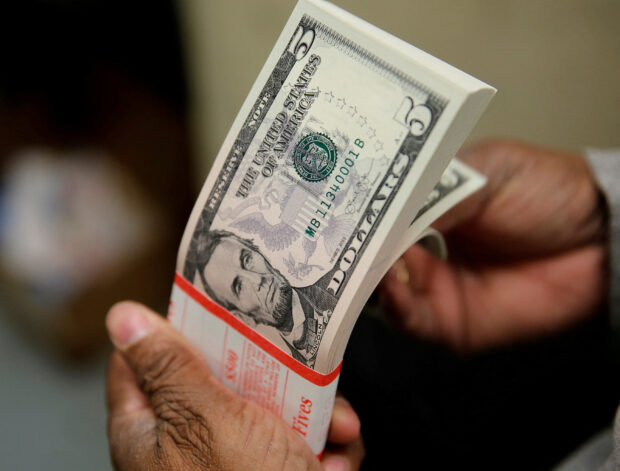The value of the dollar declined on Tuesday following indications from Federal Reserve officials that the central bank is nearing the end of its tightening cycle. However, the dollar traded within a narrow range ahead of an important U.S. inflation report.
On Monday, several Fed officials stated that the central bank will likely need to raise interest rates further to combat high inflation. However, they also suggested that the end of the current monetary policy tightening cycle is approaching.
These comments caused the dollar to drop to a two-month low of 101.88 against a basket of currencies during early Asia trade, as traders reduced their expectations of further U.S. interest rate hikes.
Since the Fed began tightening its monetary policy last year, U.S. interest rate expectations have significantly influenced the value of the dollar.
Meanwhile, the pound reached a 15-month high of $1.2869, while the euro increased by 0.03% to $1.1004.
“The main focus of yesterday’s Federal Open Market Committee (FOMC) speak was the affirmation that a couple more rate hikes are likely in the coming months, but this is not really surprising,” said Carol Kong, a currency strategist at Commonwealth Bank of Australia.
Market attention is now focused on the U.S. inflation data set to be released on Wednesday, which will provide further clarity on the Fed’s progress in reducing consumer prices.
A survey from the New York Federal Reserve revealed waning inflation expectations among Americans, who anticipate the lowest near-term inflation gains in over two years.
“If tomorrow’s Consumer Price Index (CPI) report is strong, it may support market expectations of a second rate hike from the FOMC after July, thus driving the dollar higher. However, I don’t believe there will be a significant upside as we are near the peak of the FOMC tightening cycle,” Kong added.
The Japanese yen rose to a near one-month high of 141.15 per dollar on Tuesday, with the dollar/yen pair being particularly influenced by U.S. treasury yields due to Japan’s near-zero interest rates.
Elsewhere, the Australian dollar increased by 0.16% to $0.6687, while the New Zealand dollar rose by 0.06% to $0.6216.
However, gains in the Australian and New Zealand dollars against the dollar were limited due to China’s struggling economic recovery, as both currencies serve as proxy indicators for the Chinese yuan.
In the offshore market, the yuan marginally increased to 7.2254 per dollar.
Data from Monday revealed that China’s producer prices recorded their fastest decline in over seven years in June, and consumer prices hovered on the edge of deflation.
“China’s year-over-year CPI and PPI data for June, which came in below expectations, suggests China’s ongoing struggle with deflation in the absence of strong aggregate demand,” highlighted Macquarie strategists in a note. “To instill optimism in traders, it seems that nothing short of a forceful stimulus program will be needed.”
Read Next
Subscribe to INQUIRER PLUS to gain access to The Philippine Daily Inquirer and over 70 other titles, share up to 5 gadgets, listen to the news, download articles as early as 4am, and share them on social media. Call 896 6000.
For feedback, complaints, or inquiries, contact us.
Denial of responsibility! SamacharCentrl is an automatic aggregator of Global media. In each content, the hyperlink to the primary source is specified. All trademarks belong to their rightful owners, and all materials to their authors. For any complaint, please reach us at – [email protected]. We will take necessary action within 24 hours.

Omprakash Tiwary is a business writer who delves into the intricacies of the corporate world. With a focus on finance and economic landscape. He offers readers valuable insights into market trends, entrepreneurship, and economic developments.


